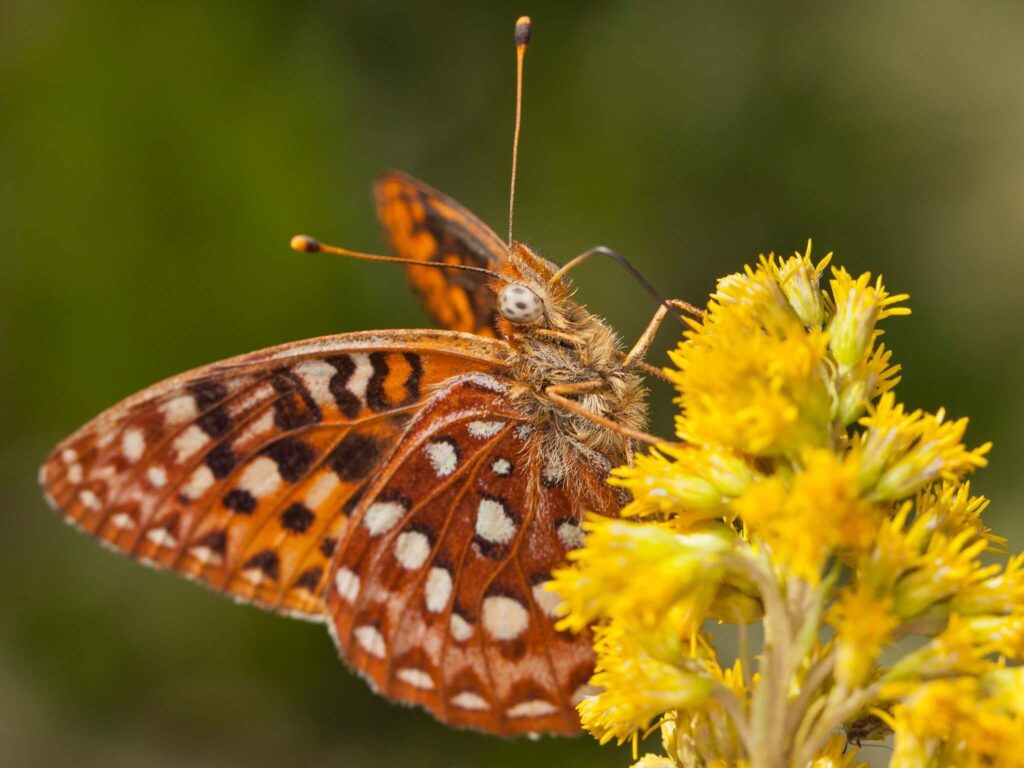Speyeria zerene hippolyta

Habitat, Diet & Status
Habitat: Coastal salt-spray meadows and stabilized dunes with abundant early blue violets (Viola adunca)
ESA Status: Threatened (listed in 1980)
Diet: Larvae feed exclusively on early blue violets; adults consume nectar from native wildflowers
The Oregon silverspot butterfly is a striking orange-brown species known for the metallic silver spots on the underside of its wings. Once common from northern California to Washington’s coast, it now survives in only a handful of sites along the Oregon Coast. The caterpillars rely entirely on the early blue violet, making the butterfly’s fate tightly tied to this single native plant.
The Message and the Meadow
Silverspot populations have declined due to habitat loss, coastal development, invasive plants, and fire suppression. The open, sunny meadows where violets thrive are gradually being overtaken by shrubs and trees in the absence of natural disturbance. Without active restoration, including controlled burning and invasive species removal, the violets—and the butterflies that depend on them—cannot persist.
Efforts are now underway to reintroduce and protect Oregon silverspots in the wild. Conservation teams are restoring meadows, monitoring populations, and breeding butterflies in captivity for release into suitable habitat. These butterflies serve as an indicator species, representing the health of a unique coastal ecosystem shared by pollinators, birds, and native plants.
What You Can Do: Support meadow restoration projects and land trusts that protect coastal grasslands. Grow native violets and wildflowers in your garden if you live nearby. Share the story of the silverspot to help others see how even the smallest creatures are tied to big conservation goals.
